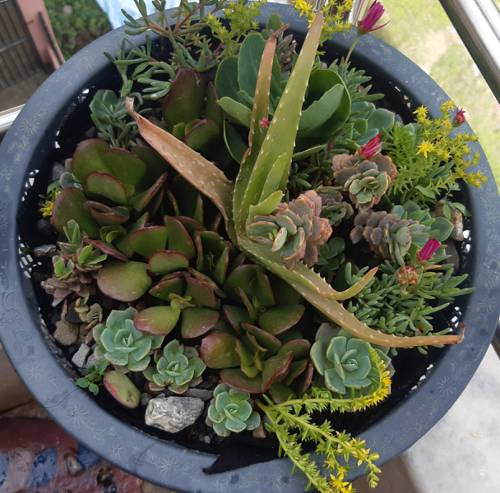
FAQ About Indoor Plant Sleep Cycles and their Impacts

Do indoor plants have a sleep cycle?
Yes, indoor plants have a biological sleep cycle known as the circadian rhythm. This cycle is a natural process that regulates the plant's behavior in response to light and dark periods. During the night, many plants close their stomata and slow down photosynthesis, while some processes like growth and respiration continue.

How do indoor plant sleep cycles impact their growth?
Indoor plant sleep cycles significantly impact their growth. During the sleep phase, plants focus energy on cell repair and growth. This period is crucial for chlorophyll regeneration, a vital component for photosynthesis when sunlight becomes available again. Hence, optimizing the sleep environment enhances their health and growth potential.

What conditions are optimal for indoor plant sleep cycles?
Optimal conditions for indoor plant sleep cycles include ensuring uninterrupted darkness, maintaining appropriate temperature and humidity levels, and avoiding exposure to artificial lights during nighttime. These conditions help mimic natural environments and support the plant's natural circadian rhythm.

Can artificial light affect an indoor plant's sleep cycle?
Yes, artificial light can disrupt an indoor plant's sleep cycle. Exposure to light during their natural night period can confuse their circadian rhythm, potentially affecting processes such as growth and flowering. To prevent disruption, use a timer to simulate natural light and dark cycles when using artificial lighting.

Do all plants have the same sleep cycle?
No, not all plants have the same sleep cycle. Different species have varying light and dark cycle requirements. For example, some tropical plants might need longer daylight periods, while others adapted to different climates may have shorter or varied cycles. Understanding the specific needs of each plant species is crucial for optimal care.

How can I tell if my indoor plants are sleeping?
You can tell if your indoor plants are 'sleeping' by observing their physical changes, such as drooping leaves or branches that may close or fold inward. These changes typically occur in response to the absence of light and signal the plant's transition to its resting phase.

Is it important to cater to the specific sleep requirements of different plant species?
Yes, catering to the specific sleep requirements of different plant species is important. Providing the appropriate light and dark cycles according to each species' needs ensures optimal health, growth, and flowering. Variations from these conditions can lead to stress and affect plant vitality.

What happens if an indoor plant's sleep cycle is disrupted?
If an indoor plant's sleep cycle is disrupted, it can lead to stress and reduced growth rates. Disruptions in their circadian rhythm may result in poor nutrient uptake, less efficient photosynthesis, and vulnerability to diseases, affecting the plant's overall health and lifespan.

Can some plants function with irregular sleep cycles?
Some plants can adapt to irregular sleep cycles better than others, but most will not thrive in such conditions. Over time, inconsistent light and dark periods can lead to diminished health and productivity. It's best to maintain regular cycles to ensure plant well-being.

How does temperature affect an indoor plant's sleep cycle?
Temperature plays a significant role in an indoor plant's sleep cycle. Most plants require a slight drop in temperature at night to mimic natural conditions, signaling that it's time to rest. Keeping the night temperature cooler than the day helps maintain their circadian rhythm effectively.

Are there any common misconceptions about plant sleep cycles?
A common misconception is that plants are inactive during their sleep cycles. While photosynthesis pauses in darkness, other processes like respiration and growth continue. Another misunderstanding is the belief that all plants need the same sleep cycle, which varies across species.

What is the role of humidity in an indoor plant's sleep cycle?
Humidity levels can influence an indoor plant's sleep cycle. Many plants prefer stable humidity levels that do not fluctuate dramatically between day and night, avoiding stress. Consistent humidity supports normal physiological functions while they rest, promoting overall health.

How can I simulate optimal sleep conditions for indoor plants in winter?
To simulate optimal sleep conditions for indoor plants in winter, decrease artificial light exposure during night periods, maintain consistent temperatures, and use humidifiers to support stable humidity levels. This setup helps mimic the plant's natural environment despite the shorter daylight hours.

What types of light are beneficial for indoor plant sleep cycles?
Lights that support an indoor plant's circadian rhythm, such as full-spectrum LEDs, are beneficial as they can simulate natural sunlight and help transition plants through their light and dark cycles effectively. Avoidance of blue light at night is also recommended, as it can disrupt sleep processes.

Do indoor plants perform photosynthesis during their sleep cycle?
No, indoor plants do not perform photosynthesis during their sleep cycle as it requires sunlight. At night, plants undergo respiration and other internal processes, preparing themselves for photosynthesis when daylight is available again.

How can I ensure my indoor plant receives an appropriate amount of darkness?
Ensure your indoor plant receives an appropriate amount of darkness by minimizing artificial light exposure during its night cycle. You might use curtains or blinds to block out street lights and set timers on grow lights to provide consistent dark periods crucial for maintaining healthy sleep cycles.

Why do some plants close their leaves at night?
Some plants close their leaves at night as a part of their circadian rhythm to conserve energy and reduce water loss through transpiration. This behavior helps them maintain internal balance and prepares them for the active phase of photosynthesis during the day.

Can I use grow lights to regulate my indoor plant's sleep cycle?
Yes, you can use grow lights to regulate your indoor plant's sleep cycle. By setting timers to mimic natural patterns of daylight and darkness, you can ensure your plants receive a consistent cycle conducive to healthy sleep, growth, and development.

Are there specific plant species with unique sleep cycles?
Yes, there are specific plant species with unique sleep cycles. For example, some desert plants open their stomata at night to avoid water loss, while others adapted to different environmental conditions might have distinctive day-night patterns. Knowing these specifics aids in proper care.
